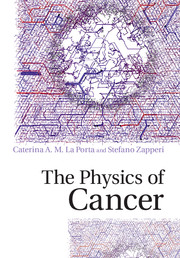Tumors need nutrients and oxygen to grow and, at the same time, must evacuate metabolic waste and carbon dioxide. To this end, tumor cells induce the sprout of new vessels from the pre-existing ones through a process known as angiogenesis, introduced in Section 4.1, where we mostly focus on the main biological aspects. In Section 4.2, we discuss how tumor cells can form vessels directly, a process known as vasculogenic mimicry. The physical aspects of angiogenesis, such as the constraints posed by the hydrodynamics of blood flow, are reviewed in Section 4.3. Finally, Section 4.4 is devoted to a discussion of the physics-based computational models for angiogenesis. These models are interesting since they allow therapeutic strategies in silico to be tested by simulating the release of drugs through the blood flow.
Biological Aspects of Angiogenesis
The growth of a tumor and its capacity to invade and give rise to metastasis crucially depend on angiogenesis, which is thus considered one of the hallmarks of cancer (Hanahan and Weinberg, 2000). Whereas blood vessel growth is tightly regulated under physiological conditions, the vasculature produced by angiogenesis in tumors typically displays aberrant structure, geometry and organization (see Figure 4.1), showing an excess of branching and modifications in the shape and size of vessels, which is reflected in defective blood flow and leakage (McDonald and Choyke, 2003; Nagy et al., 2010).
The acquisition of an angiogenic phenotype in tumors is associated to a switch in the balance between pro- and anti-angiogenic factors (Baeriswyl and Christofori, 2009; Bergers and Benjamin, 2003). This switch can be specific to distinct tumor types and localizations, and might also be altered during tumor progression (Folkman, 2002).
